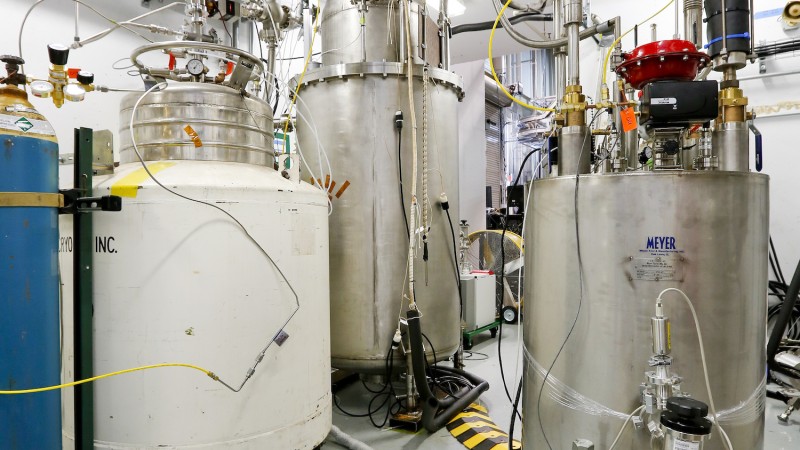The cryogenic test facility at Oak Ridge National Laboratory’s Spallation Neutron Source (SNS) provided a unique environment for testing the performance of a 9 foot-tall tritium-compatible cryoviscous compressor pump prototype designed for the ITER tokamak. Initial testing, using deuterium to simulate tritium capture, occurred in late April. So far, the results show that a large portion of deuterium was successfully captured by the pump—a necessary part of the fuel recycling process in the ITER fusion reactor. The international ITER facility is now under construction in southern France; the US and other ITER partners are busy designing and fabricating components for the ITER machine.
“This is the first use of the cryogenic test facility for projects outside SNS,” said Sang-Ho Kim, group leader for superconducting LINAC systems in the research accelerator division at SNS. “Our group has been collaborating with the US ITER roughing pumps team for several years, planning for this testing and discussing related technical issues.”
The SNS cryogenic test facility was commissioned in 2013 for superconducting radio-frequency cavity testing and can provide refrigeration down to 4.5 Kelvin, or about -450 F, plus helium liquefaction at a flow rate of 240 liters per hour. These features contribute to an environment with temperatures, pressures and flow rates similar to the requirements of the ITER reactor.





